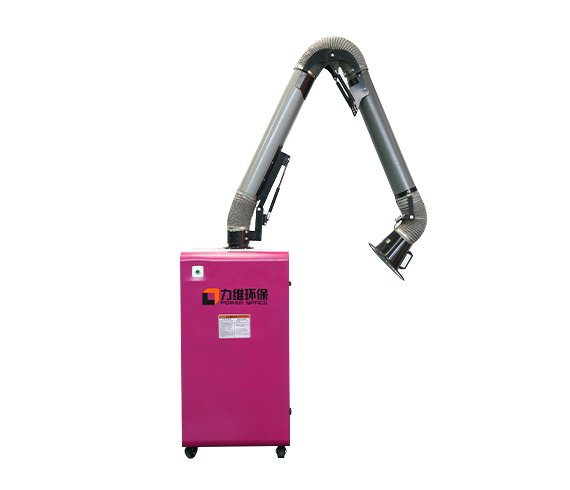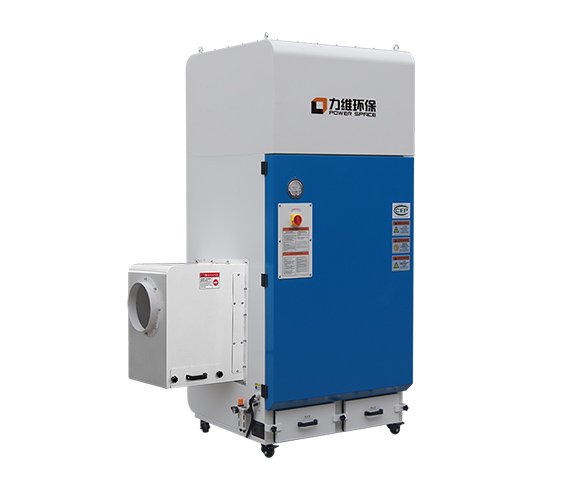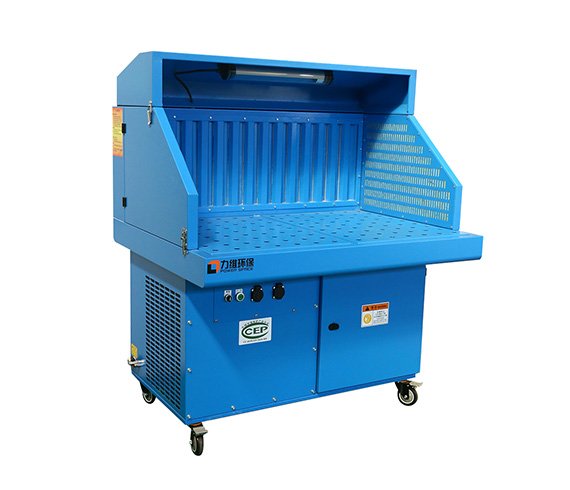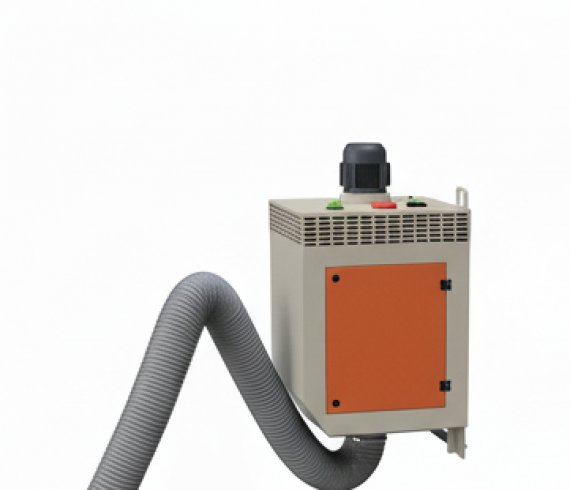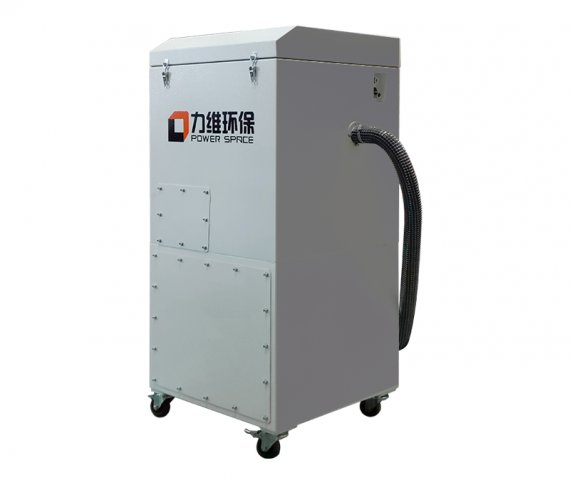News
Power Space tailor-made dust removal plan for you
The Ultimate Guide to Plasma Cutting Fume Extraction Systems
Plasma cutting is a powerful and versatile process, but it generates a significant amount of hazardous fumes and particulate matter. Without an effective fume extraction system for a plasma cutting machine, operators are exposed to serious health risks, and the workshop environment can become contaminated. Investing in the right fume suction system is not just a regulatory requirement; it's a critical component of a safe and productive metal fabrication workshop.
This guide will explore three primary types of fume extraction solutions to help you understand which system is best suited for your specific needs. Whether you're running a small tube cutter or a massive open-gantry machine, there is a plasma cutting fume extraction system designed to protect your team and your business.
Why Fume Extraction is Non-Negotiable in Plasma Cutting
When a plasma torch slices through metal, it vaporizes the material, creating a plume of smoke and gas. This isn't just ordinary smoke; it's a complex mixture of microscopic metal particles, toxic gases like ozone and nitrogen oxides, and potentially carcinogenic compounds such as hexavalent chromium (from stainless steel).
Inhaling these fumes can lead to immediate health issues like metal fume fever, respiratory irritation, and dizziness. Long-term exposure is linked to more severe conditions, including occupational asthma, lung damage, and an increased risk of cancer. An efficient fume suction system captures these dangerous contaminants at the source, ensuring clean air for your operators and a safer working environment.
Solution 1: The Downdraft System for Enclosed & Exchangeable Tables
For high-production environments, particularly those using machines with exchangeable platforms or integrated enclosures, a downdraft fume extraction system is often the most efficient solution.
How it Works: This system is built directly into the cutting table. The surface of the table is a grate that the workpiece rests on. Beneath this grate are a series of ducts or a zoned chamber. As the plasma cutter operates, a powerful fan pulls the fumes and dust downwards, away from the operator's breathing zone, and into the filtration unit.
Case Study: The High-Power Enclosed Cutter
Consider a large, enclosed plasma cutter, such as an 8025 model with a powerful 12,000W plasma source. This machine is designed for heavy-duty, continuous use.
Design: The cutting bed is fully integrated with a downdraft air duct and a pre-designed suction port. This seamless integration ensures maximum capture efficiency.
Air Volume: To handle the immense volume of fumes produced by a 12,000W source, the system requires a high-capacity dust collector. The design calls for an airflow of 11,000 m³/h.
Filtration Unit: A powerful, integrated smoke and dust purifier (like an LW-S-1212-150 model) is necessary. With a processing air volume of 9,000-11,000 m³/h and a 15kW motor, this unit has the power to maintain consistent suction across the entire cutting area, ensuring no fumes escape.

(Laser Dust Collector for the High-Power Enclosed Cutter)
Best For:
CNC plasma tables with integrated or full enclosures.
High-volume production where manual repositioning of a capture arm is impractical.
Cutting applications where the workpiece completely covers a specific zone of the table.
Solution 2: The Overhead Suction Hood for Large, Open-Gantry Machines
What about massive, open-style cutting machines where a downdraft table isn't feasible? For these applications, a source-capture system that moves with the cutting head is the ideal solution.
How it Works: An overhead suction hood is mounted on a gantry or track system directly above the cutting head. This hood is connected via flexible ducting to a dust collector. As the plasma torch moves along the X and Y axes to cut the material, the suction hood travels with it, constantly positioning itself over the point of fume generation.
Case Study: The Large-Format Open Laser Cutter
Imagine a massive open-frame machine, 4.5 meters wide and 16 meters long, equipped with an incredibly powerful 20,000W plasma source. There is no bottom air duct, making a downdraft system impossible.
Design: A suction hood (e.g., 4.5m x 2m) is mounted on a support frame with wheels that run on a track, directly linked to the cutting head's gantry. As the head moves, the entire hood assembly moves with it. Soft curtains around the hood help to contain the fumes and improve capture velocity.
Air Volume: Due to the open environment and the rapid movement of the cutting head, the designed air volume must be high to overcome cross-drafts. A system designed for 10,000 m³/h is specified, but the main dust collector must be even more powerful to compensate for pressure loss in the long ducting.
Filtration Unit: A robust, high-capacity dust collector (like an LW-S-1218-185 model) is essential. With a processing range of 12,000-16,000 m³/h and an 18.5kW motor, this unit has the power to pull a massive volume of air through the mobile hood, ensuring effective capture despite the challenging open-air setup.

(Laser Dust Collector for Open Laser Cutter)
Best For:
Large gantry-style plasma cutters.
Shipbuilding, heavy plate fabrication, and other large-scale cutting applications.
Situations where the machine is not enclosed and a downdraft table is not practical.
Solution 3: The Enclosed & Top-Mounted Suction for Specialized Machines
For smaller, more specialized equipment like tube cutters, a simpler, more direct extraction method is often the most effective. By sealing the machine, you create a contained environment that makes fume extraction highly efficient.
How it Works: The main body of the cutting machine is sealed as much as possible. A single suction port is installed at the top or rear of the enclosure. A fan then draws all the fumes from within the sealed chamber through ducting to a dedicated dust collector.
Case Study: The Laser Tube Cutter
Take a laser tube cutter with a 6,000W power source. The cutting action happens within a relatively confined space.
Design: The top of the machine's main body is sealed. A strategically placed opening is created to serve as the suction port, which is then connected via a simple pipe or duct to the dust collector.
Air Volume: Because the area is contained, the required air volume is lower than that of open systems. An airflow of 5,500-6,500 m³/h is sufficient to create negative pressure within the enclosure and effectively remove all fumes.
Filtration Unit: A more moderately sized dust collector (like an LW-S-1206-075 model) with a 7.5kW motor provides ample power for this application. It's an energy-efficient yet highly effective solution.

(Laser Dust Collector for Laser Tube Cutter)
Best For:
CNC tube and pipe cutters.
Smaller, fully enclosed plasma cutting systems.
Robotic cutting cells where the entire operation is contained.
How to Choose the Right Fume Extraction System
Selecting the best fume extraction system for your plasma cutting machine depends on several factors:
Machine Type and Size: Is it an open-gantry, enclosed table, or specialized machine? The physical design of your cutter is the single biggest factor.
Cutting Power: Higher amperage/wattage creates more fumes, requiring a higher airflow (m³/h or CFM) to capture them.
Materials Cut: Cutting stainless steel or coated metals requires high-efficiency filters (like MERV 15 or higher) to capture dangerous sub-micron particles.
Workshop Layout: Do you have space for a large central dust collector? Can you accommodate overhead ducting?
If you need professional suggestion, contact our experts to get suitable laser dust collection model.


